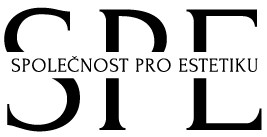Renaissance Art and Science: Aesthetizing Human Corpse (Renaissance Anatomy Atlas as a Form of Artbook)
Agnieszka Bandura | Univerzita Wroclaw
Středa 15. 5. 2019 | 18.00| Seminář estetiky FF MU| místnost B 2.13
The Renaissance artists were deeply interested in analyzing and understanding the anatomy of the human body – very often they executed dissections and presented the anatomical study in series of anatomical images which constituted the first systematic scientific anatomical work. The anatomical knowledge they gained this way was then applied in artistic practice.
Moreover, the Renaissance human anatomy atlases were made in a close cooperation between the anatomist (a physician, a scientist) and the artist.
Of course, the best example here would be the Vesalius’ (who was the father of modern anatomy) and van Calcar’s De humani corporis fabrica (1555) but there are much more excellent anatomical works from the period of Renaissance and Baroque which could be nowadays perceived as the art objects (art books) themselves, mostly because of their aesthetic and artistic values. I think especially about (put here in a chronological order): Jacopo Berengario da Carpi’s Anatomia Carpi (1523, 1535), Charles Estienne’s De dissectione partium corporis humani libri tres (1545), Juan Valverde de Amusco’s Historia de la composicion del cuerpo humano (1556, 1560), Pietro da Cortona’s Tabulae anatomicae (1619-1741) or Govard Bidloo’s and Gerard de Lairesse’s Anatomia humani corporis (1685).
I think that human anatomy atlases from the 16th and 17th century were the artistically distinguished illustrations of modern philosophy leitmotifs, i.e.: the idea of renovatio hominis and anthropocentrism as well; the interest in the human subject/ individuum – with its dignity, excellence, etc., imagination, originality, individuality, genius and so on; the focus on the human condition with its infinite, divine potential and limitations (incl. mortality, imperfection, weakness, ugliness); the analyses of human worldliness or mundanity (with Terence’s “Homo sum, humani nihil a me alienum puto”).
Human body atlases of those times (as the Renaissance art in general) explored the relationship between art and science, empirical knowledge and imagination or fantasy.
Moreover, in the atlases death and human corpse were the objects of artistic creation, invention and inscenization or aesthetization. This is how the Renaissance artist from the God’s creature (creatura) became a homo creator himself.
